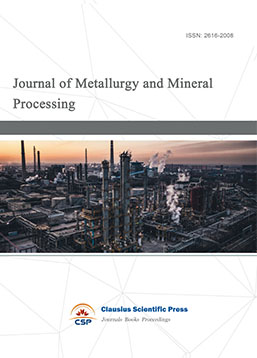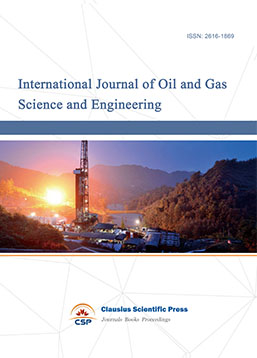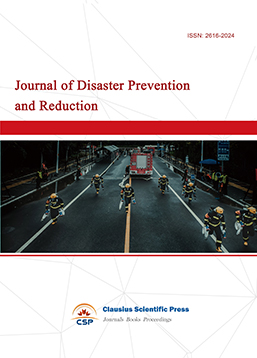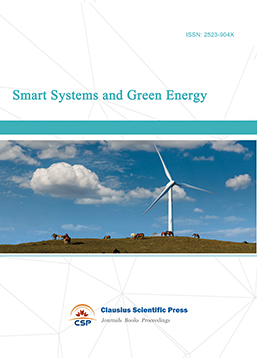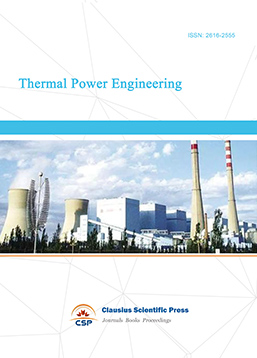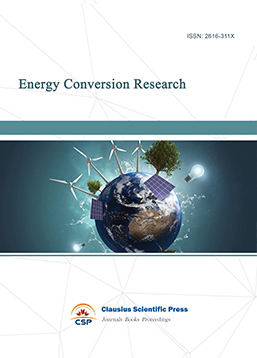Design of Anti-deflection Wireless Charging System for Unmanned Surface Vehicles
DOI: 10.23977/fpes.2023.020105 | Downloads: 3 | Views: 369
Author(s)
Xie Wei 1, Zhang Gangao 1, Zhou Zheng 1
Affiliation(s)
1 School of Ocean Engineering, Jiangsu Ocean University, Lianyungang, Jiangsu, 222005, China
Corresponding Author
Xie WeiABSTRACT
Compared with the traditional wired charging method, the wireless power transmission technology of unmanned surface vehicles has the characteristics of flexibility, convenience and safety. Aiming at the decline in transmission efficiency and output power fluctuation caused by coil deflection in Marine environment, an anti-deflection wireless charging system with arc three-coil structure is proposed. Firstly, the topology model of wireless charging of unmanned surface vehicles is established under resonant condition, and the influence of attitude change of unmanned surface vehicles on wireless charging transmission performance is analyzed. Then, according to the law that the magnetic field intensity of wireless charging coil varies with the deflection angle, the arc three-coil magnetic coupling mechanism of unmanned surface vehicles is designed, and the remarkable performance of the mechanism in stabilizing the mutual inductance intensity is analyzed theoretically. Finally, finite element software is used to carry out comprehensive simulation verification. The results show that the designed arc three-coil magnetic coupling anti-deflection mechanism can make the power fluctuation not more than 9% in the deflection range of -20~20º. It can provide theoretical reference for optimizing the wireless power transmission technology of unmanned surface vehicles.
KEYWORDS
Unmanned surface vehicles, Magnetic coupler, Anti-deflection, Wireless power transmissionCITE THIS PAPER
Xie Wei, Zhang Gangao, Zhou Zheng, Design of Anti-deflection Wireless Charging System for Unmanned Surface Vehicles. Frontiers in Power and Energy Systems (2023) Vol. 2: 32-41. DOI: http://dx.doi.org/10.23977/fpes.2023.020105.
REFERENCES
[1] Wang Qiuying, Cui Xufei, Li Yibing, et al. Performance enhancement of a USV INS/CNS/DVL integration navigation system based on an adaptive information sharing factor federated filter[J]. Sensors, 2017, 17(2): 239.
[2] Wang Yaonan, An Guowei, Wang Chuangcheng, et al. Technology application and development trend of intelligent unmanned system[J]. Chinese Journal of Ship Research, 2022, 17(5): 9-26.
[3] Xue Ming, Yang Qingxin, Zhang Pengcheng, et al. Application status and key issues of wireless power transmission technology[J]. Transactions of China Electrotechnical Society, 2021, 36(8): 1547-1568.
[4] He Tao, Yang Suhui, Zhang Haiyang. High-power high-efficiency laser power transmission at 100m using optimized multi-cell GaAs converter[J]. Chinese Physics Letters, 2014, 31(10): 104203.
[5] Strassner B, Chang K. Microwave power transmission: historical milestones and system components[J]. Proceedings of the IEEE, 2013, 101(6): 1379-1396.
[6] Zhang Bo, Shu Xujian, Huang Runhong. The Development of inductive and resonant wireless power transfer technology[J]. Transactions of China Electrotechnical Society, 2017, 32(18): 3-17.
[7] Jia Jinliang, Yan Xiaoqing. Research tends of magnetic coupling resonant wireless power transfer characteristics[J]. Transactions of China Electrotechnical Society, 2020, 35(20): 4217-4231.
[8] Galib R, Chowdhury R, Jobayer M, et al. Maximum efficiency tracking of a threecoil inductive power transfer system for wireless EV battery charging applications[C]//2023 Third International Conference on Advances in Electrical, Computing, Communication and Sustainable Technologies (ICAECT). Bhilai, India: IEEE, 2023: 1-13.
[9] Huang Zhenhua, Xue Jiaxiang. Optimization design of wireless charging pid controller based on particle swarm optimization[J]. Computer Measurement & Control, 2020, 28(11): 84-88.
[10] Li Yong, Liu Shunpan, Zhu Xiao, et al. Extension of ZVS region of series-series WPT systems by an auxiliary variable inductor for improving efficiency[J]. IEEE Transactions on Power Electronics, 2020, 36(7): 7513-7525.
[11] Moon S, Moon G. Wireless power transfer system with an asymmetric 4-coil resonator for electric vehicle battery chagers[C]//2015 IEEE Applied Power Electronics Conference and Exposition (APEC). Charlotte, NC, USA: IEEE, 2015: 1650-1657.
[12] Chen Jing, Li Rui, Shuai Yu, et al. Anti-offset high-voltage wireless power transfer system based on many-to-one topology[J]. Electronics, 2023, 12(8): 1898.
[13] Tang Ziqiang, Guo Feng, Lai Yutong, et al. Research on quasi omnidirectional wireless charging with multiple transmitting coils[J]. Transducer and Microsystem Technologies, 2023, 42(03): 27-30, 35.
[14] Li Yang, Zhao Jingtai, Yang Qinxin, et al. A novel coil with high misalignment tolerance for wireless power transfer[J]. IEEE Transactions on Magnetics, 2019, 55(6): 1-4.
[15] Zeng Hao, Liu Zhizhen, Hou Yanjin, et al. Optimization of magnetic core structure for wireless charging coupler[J]. IEEE Transactions on Magnetics, 2017, 53(6): 1-4.
[16] Zhang Yinming, Wang Hui, Shen Zhiwei, et al. Misalignment-tolerant compact electric vehicle wireless charging system by using hybrid topology[J]. Proceedings of the CSEE, 2022, 42(08): 2979-2987.
[17] Gong Ziwei, Li Jinggang, Tong Xiangqian, et al. LCC-LC series hybrid wireless charging with misalignment tolerance and constant current output[J]. Transactions of China Electrotechnical Society, 37(6): 1513-1521.
[18] Babic S, Siroisi F, Akyel C, et al. Mutual inductance calculation between circular filaments arbitrarily positioned in space: alternative to Grover's formula[J]. IEEE Transactions on Magnetics, 2010, 46(9): 3591-3600.
[19] LI Mingyang, Niu Pingjuan, Li Yuhong, et al. Research on offset characteristics of three coupling coils in wireless charging system[J]. Electric Drive, 2022, 52(21).
| Downloads: | 69 |
|---|---|
| Visits: | 5809 |
Sponsors, Associates, and Links

 Download as PDF
Download as PDF